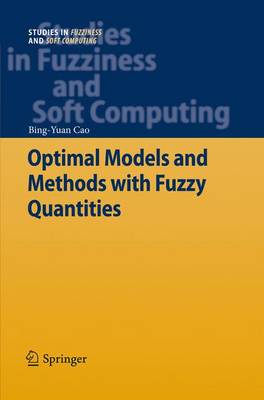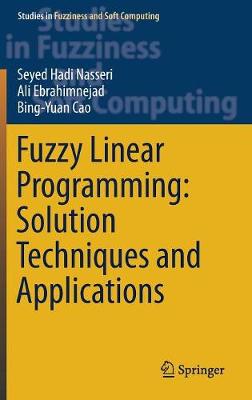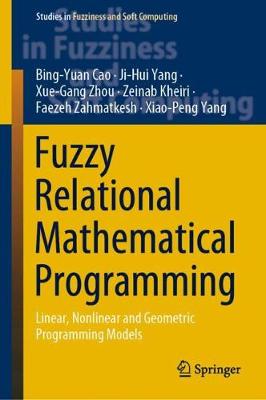Studies in Fuzziness and Soft Computing
3 primary works
Book 248
At the same time, it is supported by the Science and Technology Project of - nan Province, the Science Research Foundation of Changsha Electric Power University,"211 Project"Foundation of Shantou University and Li Ka-Shing Science Development Foundation of Shantou University, and Scienti?c - search Foundation of Guangzhou University. The research project won the ThirdAwardofGuangdongScienceandTechnologyAwardedbytheGove- ment of Guangdong Province (2005) and Third Award of Excellent Papers in Natural Science by it (2003), successively. The book contains ten chapters as follows: Chapter 1. Prepare Knowledge; Chapter2. RegressionandSelf-regressionModelswith FuzzyCoe?cients; Chapter 3.
Book 379
Fuzzy Linear Programming: Solution Techniques and Applications
by Seyed Hadi Nasseri, Ali Ebrahimnejad, and Bing-Yuan Cao
This book presents the necessary and essential backgrounds of fuzzy set theory and linear programming, particularly a broad range of common Fuzzy Linear Programming (FLP) models and related, convenient solution techniques. These models and methods belong to three common classes of fuzzy linear programming, namely: (i) FLP problems in which all coefficients are fuzzy numbers, (ii) FLP problems in which the right-hand-side vectors and the decision variables are fuzzy numbers, and (iii) FLP problems in which the cost coefficients, the right-hand-side vectors and the decision variables are fuzzy numbers.
The book essentially generalizes the well-known solution algorithms used in linear programming to the fuzzy environment. Accordingly, it can be used not only as a textbook, teaching material or reference book for undergraduate and graduate students in courses on applied mathematics, computer science, management science, industrial engineering, artificial intelligence, fuzzy information processes, and operations research, but can also serve as a reference book for researchers in these fields, especially those engaged in optimization and soft computing. For textbook purposes, it also includes simple and illustrative examples to help readers who are new to the field.
Book 389
Fuzzy Relational Mathematical Programming
by Bing-Yuan Cao, Ji-Hui Yang, Xue-Gang Zhou, Zeinab Kheiri, Faezeh Zahmatkesh, and Xiao-Peng Yang
This book summarizes years of research in the field of fuzzy relational programming, with a special emphasis on geometric models. It discusses the state-of-the-art in fuzzy relational geometric problems, together with key open issues that must be resolved to achieve a more efficient application of this method. Though chiefly based on research conducted by the authors, who were the first to introduce fuzzy geometric problems, it also covers important findings obtained in the field of linear and non-linear programming. Thanks to its balance of basic and advanced concepts, and its wealth of practical examples, the book offers a valuable guide for both newcomers and experienced researcher in the fields of soft computing and mathematical optimization.


